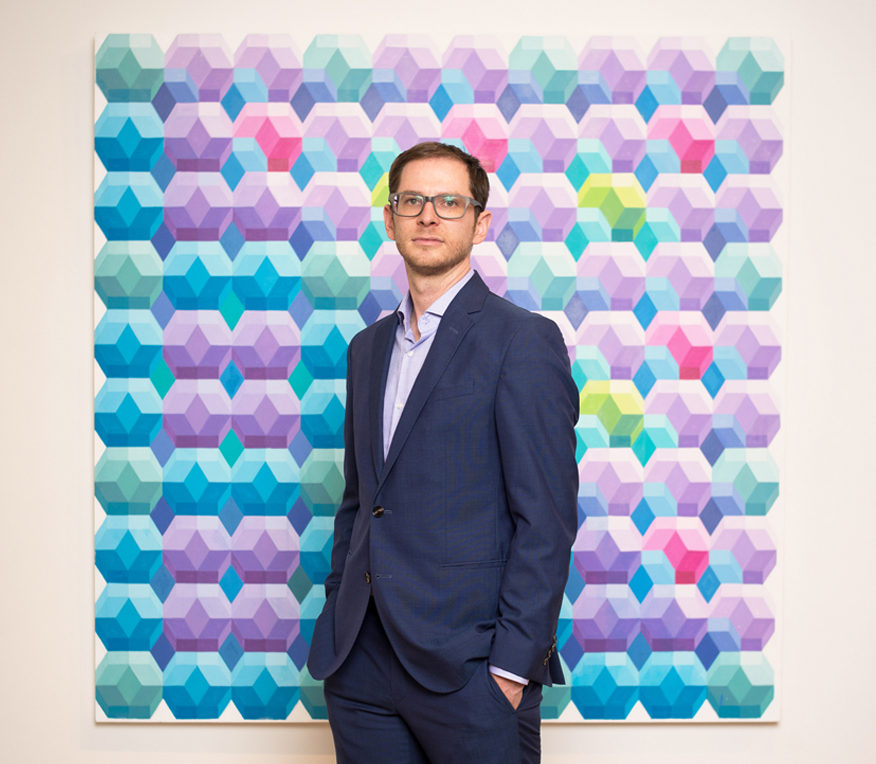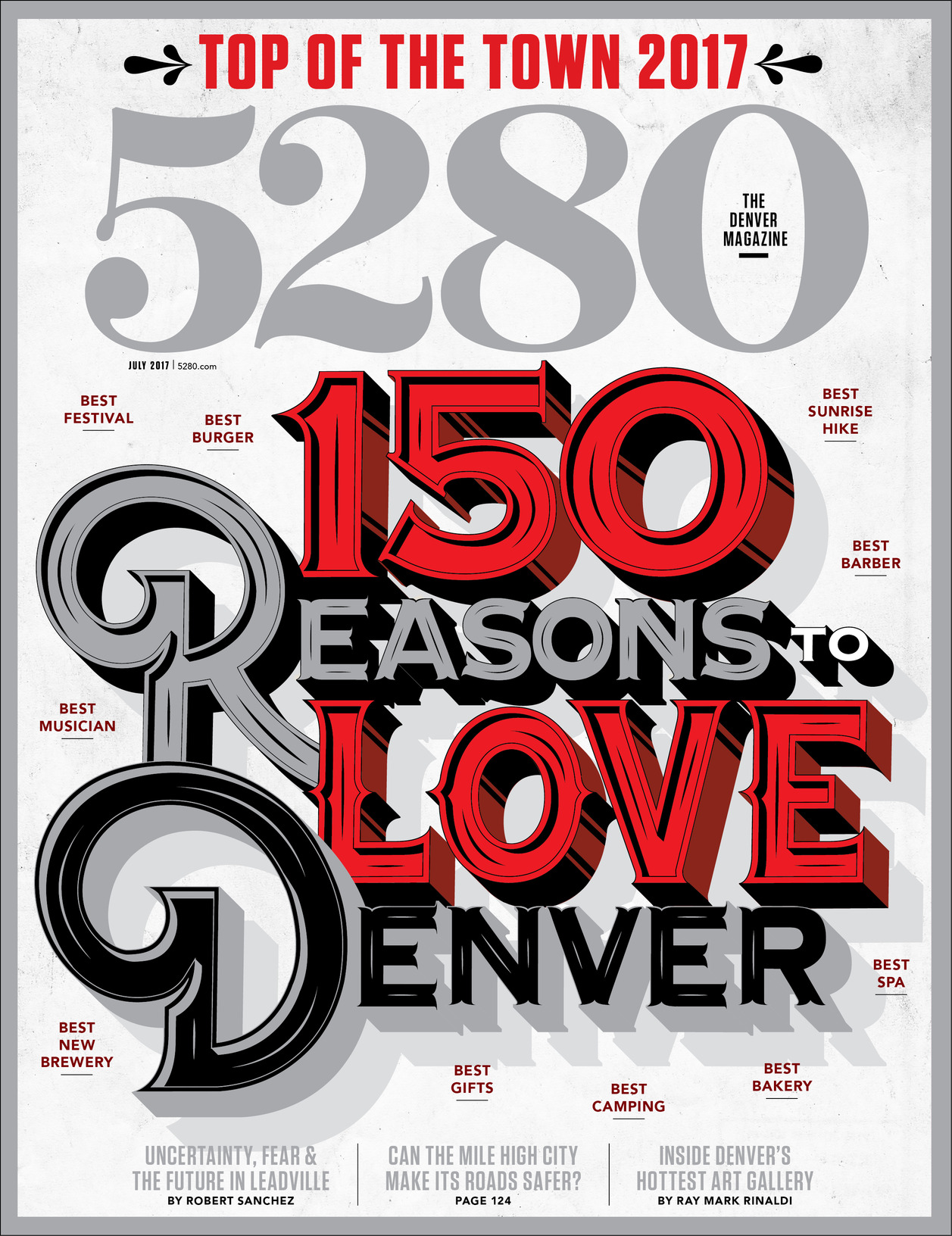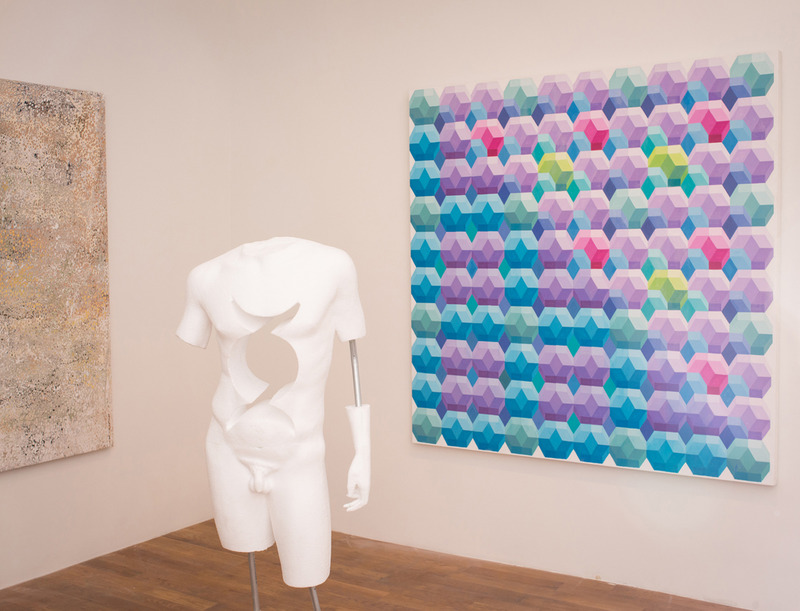The Local newsletter is your free, daily guide to life in Colorado. For locals, by locals.
We’re all friends with Adam Gildar, really. The artists he represents at his gallery; the collectors who buy his wares; the museum directors with the sway to make or break his reputation; the critics, like me, who write about his exhibits. And all of us, in our own ways, do business with him, too.
The art world is, as Gildar puts it, “a gray place,” subjective by nature, and the rules of personal relationships are fluid and fully exploitable. One day, a few years ago, I met up with him at a project space in a crowded Mexico City neighborhood for an interview about a show he was curating. All we did, in the end, was hang out on the building’s rooftop, blasting beer bottles with the artist’s high-powered BB gun and trying not to knock out the windows of the surrounding houses. Eventually, we left and drank some mezcal. But it was work for both of us.
The gallerist’s job, in 2017, is to live in the middle like that: to be fully personal yet, ultimately, transactional. To nurture those friendships that are sincere even if they end up with one party handing over a credit card or cutting a check. It all comes naturally to Gildar—he likes to talk about painting as much as he likes a night of drinks and karaoke—and that, mingled with a relentless and seductive optimism, has made him a crucial figure in Denver’s cultural scene.
Indeed, Gildar Gallery, a 900-square-foot storefront on South Broadway, is the most prestigious commercial space for Colorado artists to show work these days. Gildar’s official roster is small—just eight names—but full of talent, from thirtysomething Dmitri Obergfell, one of the stars of the Denver Art Museum’s current, wildly successful group show, Mi Tierra, to septuagenarian abstractionist Clark Richert, often called the state’s most important living artist. The work isn’t cheap: a Richert painting could, and sometimes does, go for around $20,000. But showing at Gildar isn’t all about money.
The commercial art world is equally about association and reputation and status. Does it really matter if an exhibit of work by roster artist Amber Cobb—best known for her dreamy and sensual sculptures made from mattresses and pillows—is a success with buyers? She’s seen around town as an emerging supertalent; Gildar is known for scouting out high-quality goods. The arrangement serves both parties.
As a sole proprietor, Gildar has used the grayness of the art world to his advantage, challenging the idea of what a Denver gallery can be.
Denver is served, as well. Cobb’s last show was an adventurous joy to behold, as are most of the half-dozen or so exhibits Gildar puts on each year for free public consumption. He reaches beyond his own stable to showcase worthy artists near and far, such as Denver visual artist Kristen Hatgi Sink, whose 2016 solo show featured her tableaus of naked women set atop fruit- and flower-covered tables, and Ryan Everson, a text-based artist from Portland, Oregon, who uses light to spell out quirky and evocative phrases. This summer kicked off with a show, assembled by Denver artist and curator Taylor Balkissoon, that featured a lineup of local and national artists, all black, whose works challenge the way galleries and museums package the “otherness” of the black experience for commercial gain.
That the exhibit takes place in a commercial gallery—which on one hand is providing a venue for the message and, on the other, itself hoping to profit from the packaging of the black experience—is typical Gildar stuff. It’s complicated and ambitious, part brilliant and part naive and exactly what Adam Lerner, director and chief animator of the Museum of Contemporary Art Denver, is referring to when he sums up Gildar’s professional approach as “beautifully, dumbly, deeply, intelligently blind.” He means it as the highest of compliments.
At the age of 32, Gildar has figured out the psychology of the contemporary art business—how it’s about risk-taking, not just for the artist, but for the buyer, too. Artists make objects and put them out there for the world to see. Buyers purchase things and hang them on the walls for themselves—and for when their friends come over. In both cases, people judge you on your taste.
Gildar’s goal is to create a “permissive environment” where everyone can indulge his or her choices fearlessly. “It’s a big thing to spend $10,000 or more on an object, and then to be like, ‘Is that really that valuable?’ It can be a scary experience, like you’re walking out on a ledge by yourself,” he says. “Sometimes as a gallerist—hopefully, for the artist and, hopefully, for the collector, too—I’m walking out there on that ledge with them, telling them that I’m behind this myself. I think it’s important: You’re not alone.”
As a salesman, he comes off fully committed. That’s always been the case, according to his sister, Lyn Ashley Gildar, a psychologist who is two years older than Adam. Back in their family home in Phoenix, her only sibling always wanted to “be three things at once” when he grew up, she says. He was a good negotiator. “If I really needed to sell something to my parents,” she says, “I would send in Adam.”
He fell into the art business by accident. In 2009, after he graduated from the University of Colorado Boulder, Gildar started the gallery as a project space, called Illiterate, in partnership with pals Sander Lindeke and Joseph Wall. The name came from a magazine the trio (along with a number of volunteers) published in their college days that featured art, poetry, photography, and fashion—whatever—and the space was a way to transform the zine into actual exhibits and regular programming. Illiterate was a hit; it was informal and unpredictable, known for mixing established artists with unknowns. Gildar built on that in 2011, when his partners moved on to other projects and he stayed. He morphed the establishment into an upscale commercial space and gave it his own name in 2012.
As a sole proprietor, Gildar has used the grayness of the art world to his advantage, challenging the idea of what a Denver gallery—and a Denver gallerist—can be. He’s more intimately involved with his artists than any other dealer I know. “I’m very much in dialogue with them, about what they’re doing, how they do it, what they are thinking about,” Gildar says. “I’m not just saying, ‘Here’s a space, bring me what you’re making, and let’s do a show.’ ”
Hatgi Sink and Gildar met nearly every week for five months in advance of her five-week exhibition. He coached her on content and set deadlines that kept her on track. He pushed her, she says, to the “very edge of my comfort zone.” It worked. The exhibit was a critical and commercial success; peers and collectors who weren’t familiar with her talents began to take her seriously. Artists are frequently resentful of dealers, but Hatgi Sink says giving Gildar his 50 percent commission on sales “was reasonable because he really did so much work on the show.”
In the end, knowing art well helps to sell it. This is particularly the case with Richert’s giant, abstract canvases, which are inspired by complicated patterns that appear in science and astronomy. Gildar has helped Richert earn a few lucrative commissions, including one at the Art, a Hotel in the museum district, and he negotiated Richert’s participation in a national traveling group show called Hippie Modernism: The Struggle for Utopia. All of this has enhanced the artist’s reputation at a point in his career when legacy matters. “He’s very smart about my work, which can be difficult for some people,” Richert says. “But he understands it.”
Leveraging his success as a dealer, Gildar has become a sort of visual arts ambassador for the city. He’s partnered with Denver’s Biennial of the Americas to bring artists in from abroad, and he also founded the nonprofit ArtPlant to support artist residencies. These are civic, not commercial, endeavors; they get him out there, meeting artists and other curators, but they don’t make a lot of money. Gildar lives a modest lifestyle, camping out alone in a small apartment above his gallery.
But he does have ambitions, international ones, and the plan is to take Denver along for the ride. The gallery has worked its way into appearances at several important art fairs recently, including Untitled, the slickest of the many satellite fairs that take place around the renowned Art Basel in Miami each December; the Artbo Fair in Bogotá, Colombia; and Mexico City’s Material Art Fair, a showcase for emerging artists that is the darling of magazine editors across the globe. These fairs are competitive, and each requires an investment by the gallerist of anywhere from $5,000 to $20,000. They’re not the kinds of places Denver galleries typically show up. “Adam just doesn’t see all of the million barriers that a regional art gallery faces in terms of taking Denver artists to a national and international stage,” Lerner says. “He has a kind of naive confidence that really works for him.”
The fairs help gallerists build relationships with the big-money collectors and museum curators who frequent them, and they’re crucial if you want your gallery—and your artists, and your city—to be thought of as more than local. “I think a good gallerist has to be hungry and patient at the same time,” says Brett Schultz, an American now living in Mexico City who co-founded the Material Art Fair and has seen Gildar expand his enterprise. “It’s a long-term game.”
Still, the commercial art world moves at a fast pace. Balkissoon’s edgy show is being followed by another, about fantasy and Western privilege, which will be curated by Gildar’s gallery manager, Sophie Morris. Although Morris and Balkissoon are each only a decade younger than Gildar, he refers to them as “the next generation” of Denver curators. In a sense, he’s giving them a break, along with a cut of the action. But he needs them, too. If Gildar Gallery is to maintain its image as a place where new ideas emerge, new idea generators need to have a say in what is shown and sold there. Is that mentoring? Partnering? Exploiting? The answer is somewhere in that gray place.
Ray Mark Rinaldi is a Denver-based journalist and critic who writes about the visual arts, architecture, and classical music. Email him at letters@5280.com.











